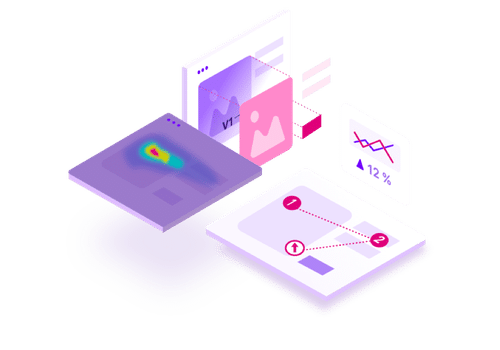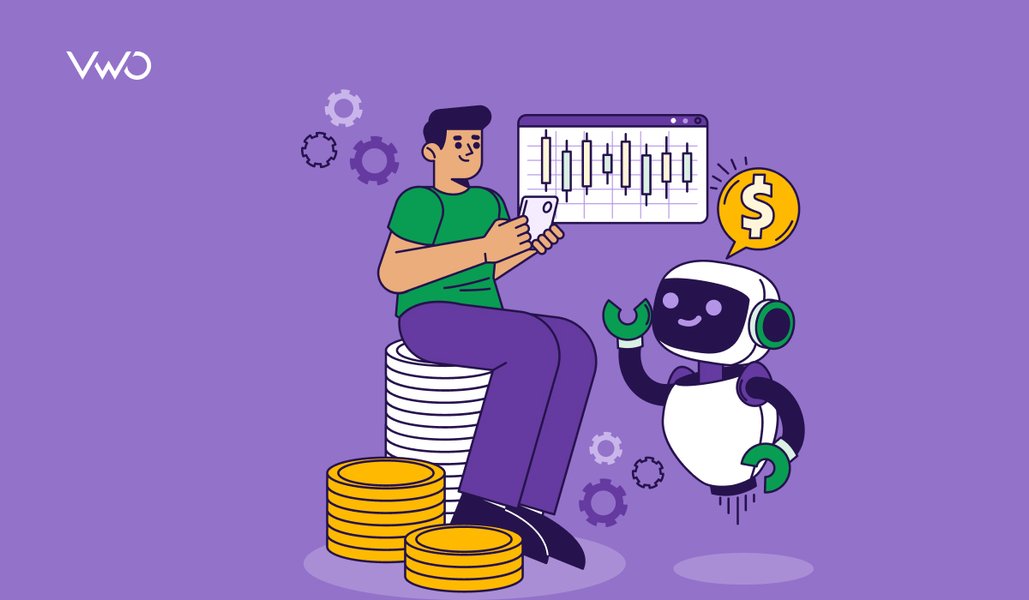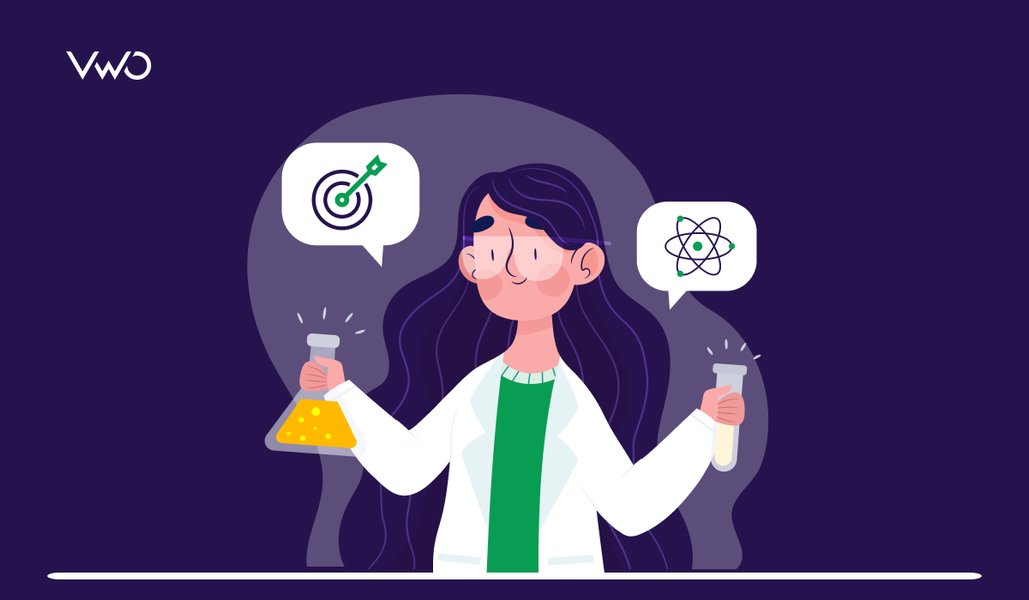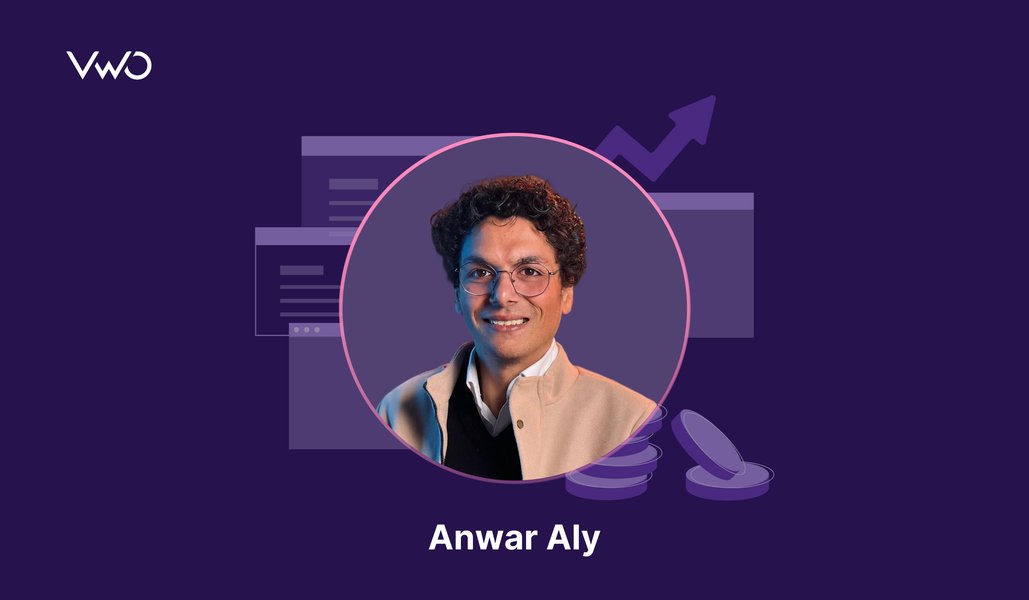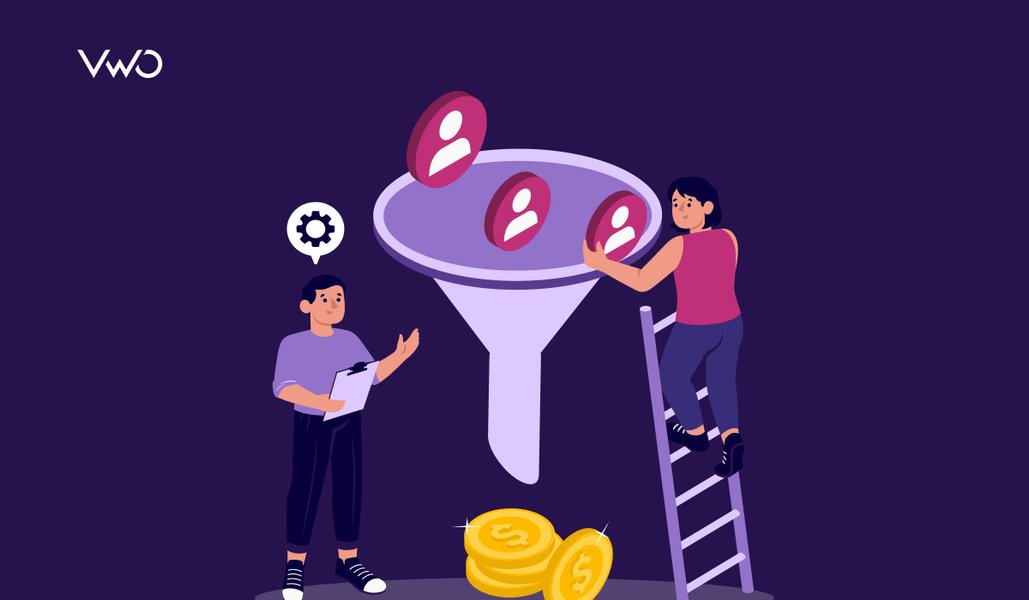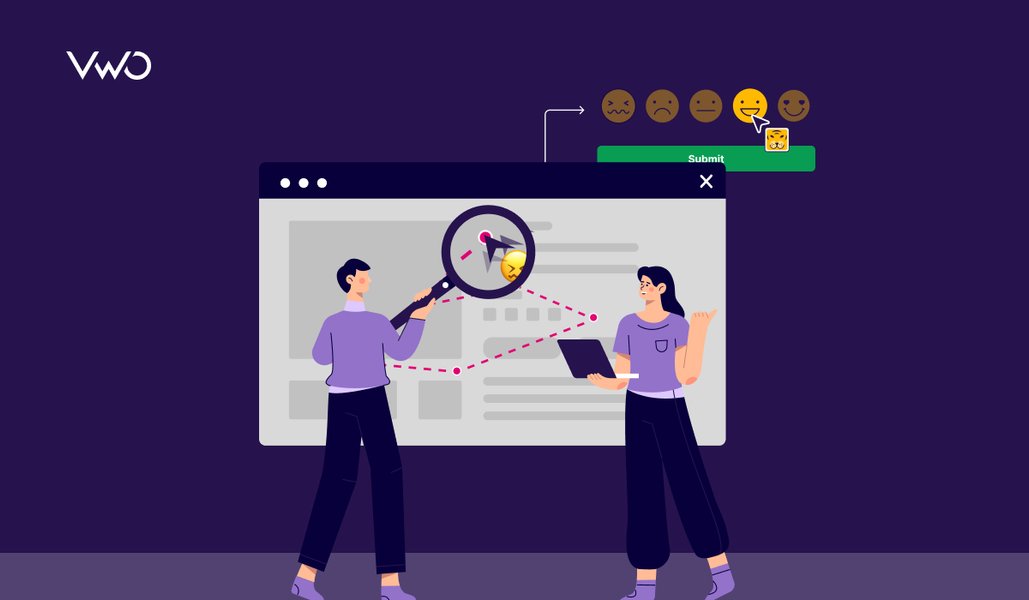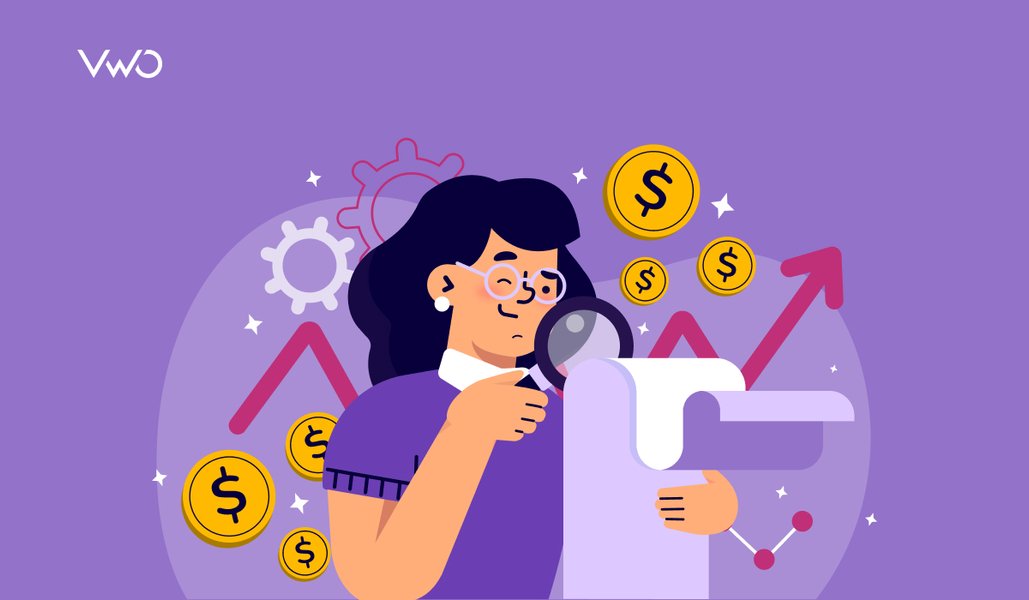High-Converting Sales Funnel: Real Business Examples and How to Create Them
You can have the best product, the slickest website, and the most persuasive pitch, but if you don’t have a clear path that turns browsers into buyers, you’re leaving money on the table.
That path is the sales funnel. It’s the journey that transforms strangers into potential customers, nurtures them into prospects, and converts them into loyal, paying customers. Mastering your funnel isn’t optional; it’s the difference between stalled growth and unstoppable momentum.
So how do you build a funnel that actually converts? And what can you learn from businesses already doing it well?
By the end of this guide, you’ll have a playbook for creating funnels that not only capture attention but also convert it into revenue. Let’s begin!
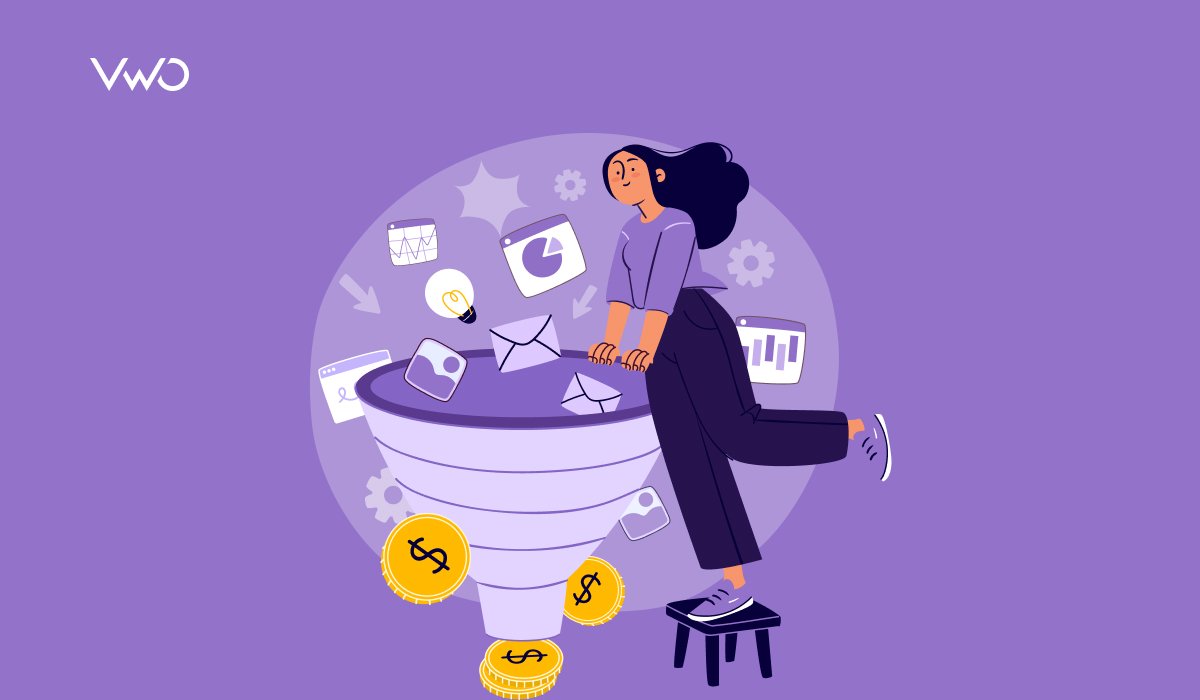
Types of sales funnels that drive higher conversions
| Funnel type | What it is | How it works | When it is useful | Example |
| Lead Generation | Captures contact info in exchange for valuable content | Offer a lead magnet (guide, checklist, webinar) → collect email → nurture via follow-ups | Service businesses, consultants, B2B | A fitness coach offers a free “7-Day Meal Plan” PDF in exchange for email sign-ups from potential customers, then promotes a coaching package via email. |
| Sales Page | Direct-to-purchase with one focused offer | Drive traffic to a dedicated page → highlight benefits, proof, and CTA → push to checkout | Low-ticket or impulse buys | An online stationery brand creates a landing page for a new $19 planner, with testimonials and a single “Buy Now” CTA |
| Webinar | Educates while selling high-ticket offers | Promote webinar → deliver value + authority → address objections → pitch offer | Courses, coaching, SaaS, B2B sales | A marketing consultant hosts a free webinar on “How to Triple Your Leads in 90 Days” to educate potential customers and close with a premium offer. |
| Free Trial/Freemium | Let users test the product before committing | Offer free plan/trial → show quick wins → upsell to paid version | SaaS, subscription models | A project management tool offers a 14-day free trial with premium features, followed by an automated email urging an upgrade to paid |
| Tripwire | Low-cost offer to turn leads into buyers | Capture lead → offer a small, irresistible paid product → upsell main offer | Digital products, online courses, and small e-commerce | An online course creator sells a $9 mini-course as a tripwire, then upsells buyers into a $199 full course |
| Quiz | An interactive funnel that segments prospects | Visitors take quiz → get personalized results → CTA for product/offer | Health, beauty, coaching, info products | A skincare brand runs a “What’s Your Skin Type?” quiz and recommends a tailored product bundle based on answers |
| eCommerce | Maximizes sales & cart recovery | Product page → upsells/cross-sells → abandoned-cart emails → loyalty/reorder offers | Online stores, D2C brands | A tea shop sells a $20 green tea pack, offers a one-click upsell of a $15 teapot, and follows up with cart reminder emails |
| Product Launch | Builds urgency and excitement for new offers | Pre-launch teasers → early access → launch emails → bonuses or discounts | New product or feature rollouts | A course creator builds hype with teaser videos, opens the cart for 5 days with bonuses, and closes enrollment with countdown timers |
How to create a sales funnel that converts?
A sales funnel is the journey that moves prospects from awareness to purchase. To convert effectively, each stage must have a clear role: attract at the Top of the Funnel (TOFU), nurture at the Middle (MOFU), and close at the Bottom (BOFU).
When these stages flow seamlessly, prospects receive value, build trust, and see buying as the natural next step. Here’s how you can build a funnel that converts:
Understand your audience and map their journey
Start by identifying who your ideal customer is and what challenges they’re facing. Then map the path the potential customer takes from discovering your brand to making a purchase. This ensures your funnel aligns with the right marketing strategies from the very beginning.
Generate awareness (TOFU)
At the very top of the funnel, you need to attract traffic before you can convert it. Content marketing, social media, and search engine optimization help bring qualified prospects into your funnel, setting the stage for everything that follows.
Example: For an online productivity course, the target audience might be busy professionals struggling with time management. Their journey could look like this: they read a blog about “How to Save 5 Hours a Week” (TOFU), sign up for a free resource (MOFU), attend a webinar (late MOFU/early BOFU), and finally purchase the course (BOFU).
Craft an irresistible offer
Your offer should feel too good to ignore, whether it’s free content, a low-cost tripwire, or the main product. It needs to solve one pressing problem quickly so that prospects feel immediate value.
The course creator could offer a free downloadable “Weekly Productivity Planner” template as a lead magnet (TOFU to MOFU transition). It solves a small but urgent problem, nudging professionals (potential customers) to enter the funnel and stay engaged.
Build optimized landing pages
Every funnel step deserves a landing page with a single, clear purpose. The copy should highlight benefits, visuals should reinforce the message, and the CTA should stand out without distraction. Keep the experience simple:
- One goal, one offer, one CTA.
- Fast load times (under 3 seconds).
- No clutter; remove extra links or menus.
- Only ask for essential details (like name and email).
The planner’s landing page could focus entirely on one message: “Save 10 Hours This Week.” The only CTA: “Download Your Free Planner.” Nothing else. The form may ask for just an email, making it effortless to sign up.
Automate follow-ups and nurture the relationship
Capturing a lead is just the beginning; what matters is how you nurture them afterward. Thoughtful, automated follow-ups keep prospects engaged and steadily build trust without draining your time.
- Share short email sequences that deliver quick wins.
- Keep messages value-driven rather than sales-heavy.
- Personalize communication and use tools like chatbots to answer questions in real time.
After downloading the planner, subscribers could receive five daily emails with small productivity hacks. By day five, they might feel the difference already, and the email naturally invites them to a webinar: “The 3 Secrets of Ultra-Productive Professionals.
Reduce friction and build trust
When prospects are ready to buy, even small obstacles can derail them. Most essential is to make the process frictionless and reassuring:
- Simplify checkout: remove unnecessary form fields and extra steps.
- Reassure buyers with testimonials, case studies, and money-back guarantees.
- Monitor data (bounce rates, cart abandonment, low email engagement) to spot and fix trust gaps.
During the webinar, the course creator could share stories of past students who doubled their productivity. A 30-day money-back guarantee removes hesitation and increases confidence in becoming paying customers.
Test, measure, and optimize
No funnel is perfect from day one; it needs ongoing refinement. Use data to see where prospects drop off and test improvements that boost performance.
- Run A/B tests on headlines, CTAs, and offers.
- Track behavior with analytics and heatmaps to identify weak spots.
- Review performance regularly, refine what’s underperforming, and scale what works.
If webinar sign-ups are low, the productivity course creator could test the form length on the webinar landing page, for example, asking only for name + email versus requesting job title and company as well. Reducing friction at this step can make it far easier for busy professionals to register, leading to a significant lift in sign-ups.
Get fresh testing ideas with VWO Copilot and skip hours of manual brainstorming. It saves you time by suggesting hypotheses backed by scientific principles in seconds, and you can even generate ready-to-test design variations directly within the Visual Editor.
Essential elements of a high-converting sales funnel
Every successful funnel shares a common DNA: clarity, trust, and simplicity at every stage. These elements act as the conversion glue, the small but critical details that keep prospects moving forward instead of slipping away. Let’s look at the key elements that make it happen:
Clear and compelling messaging
Your headline and core message should answer one question instantly: “What’s in it for me?” If your headline doesn’t communicate value, your marketing efforts to drive traffic may never pay off. Visitors only give a few seconds of attention; make sure your value is obvious and outcome-driven.
Visuals that reinforce value
Images, videos, and infographics should strengthen your message, not distract. The role of visuals is to simplify, illustrate, and build desire.
Benefit-focused copy
Features inform, but benefits persuade. Copy should highlight the outcomes prospects achieve, not just the specifications of your product or service.
Trust builders
Prospects hesitate without proof. Trust signals, such as reviews, case studies, guarantees, or recognizable logos, remove doubt and reduce perceived risk.
Strong calls-to-action (CTAs)
Every stage of the funnel should have one clear, action-driven CTA. A well-placed, well-worded button is the bridge between interest and conversion.
Frictionless experience
Speed and simplicity matter. Each extra step, slow-loading page, or unnecessary field creates friction that costs conversions. A smooth, streamlined flow keeps momentum intact.
Retention loops & automated follow-up
Leads rarely convert on the first touch. Consistent, automated engagement ensures they don’t go cold and keeps your funnel working even when you’re not.
Post-purchase reinforcement
Conversion doesn’t end at checkout. Thank-you pages, onboarding, and loyalty touches turn buyers into repeat customers and long-term advocates.
High-converting sales funnel examples from real businesses
To see how these strategies play out, let’s look at some real-life examples of businesses using different funnel types successfully.
Lead generation funnel – Crazy Egg
Crazy Egg attracts visitors through content marketing and blog resources, then nudges them toward gated offers and sign-ups. By combining educational content with simple opt-in forms, they capture leads early and nurture them into trial users.
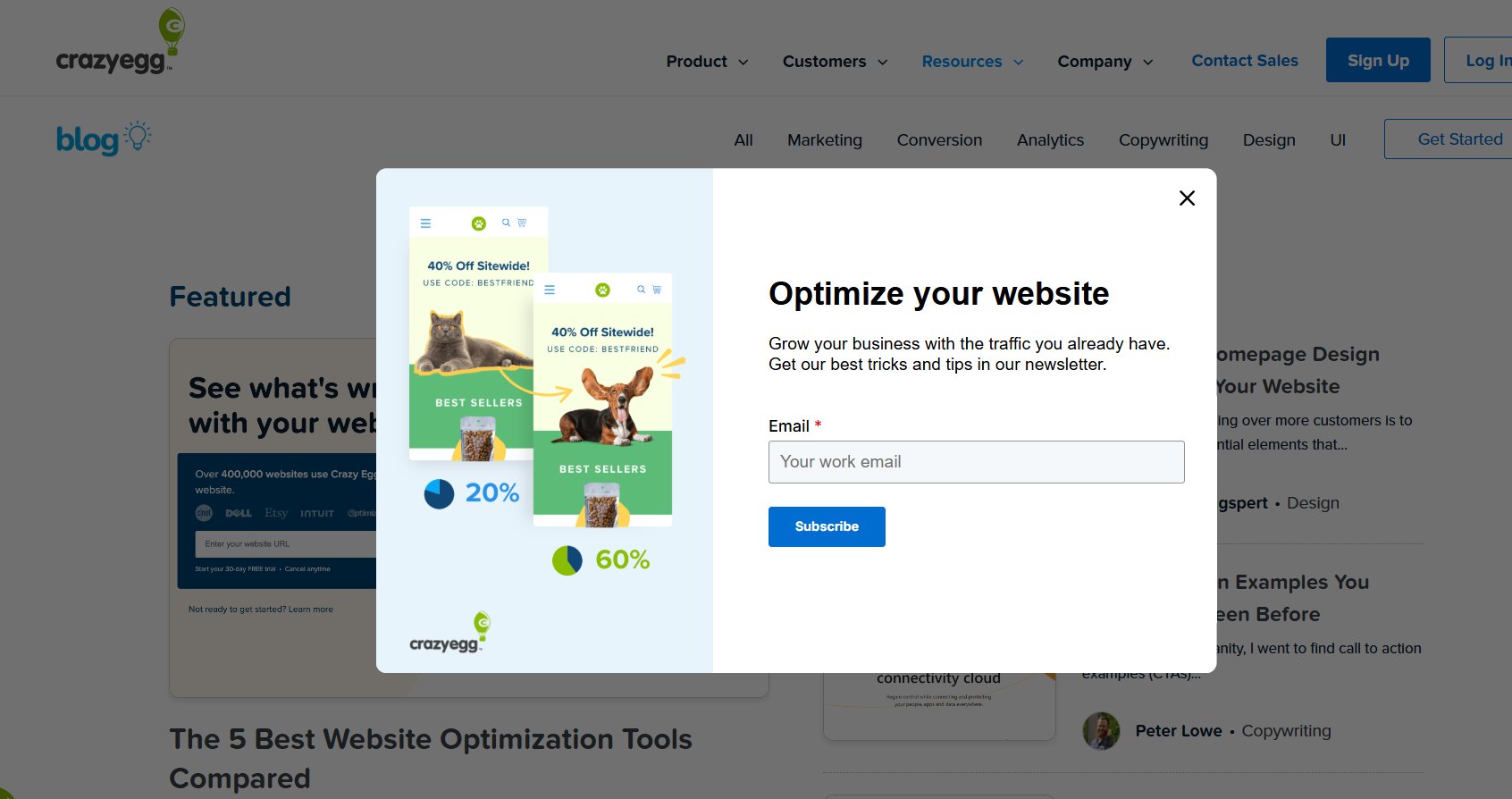
Sales page funnel – Mailchimp
Mailchimp’s pricing page is a focused sales funnel in itself. It compares plans with clear, benefit-driven copy and ends with bold CTAs like “Start Free Trial”. The tiered comparison reduces decision friction by making value differences obvious. By offering a 14-day trial on its Standard plan, Mailchimp lowers risk and guides prospects smoothly toward conversion.
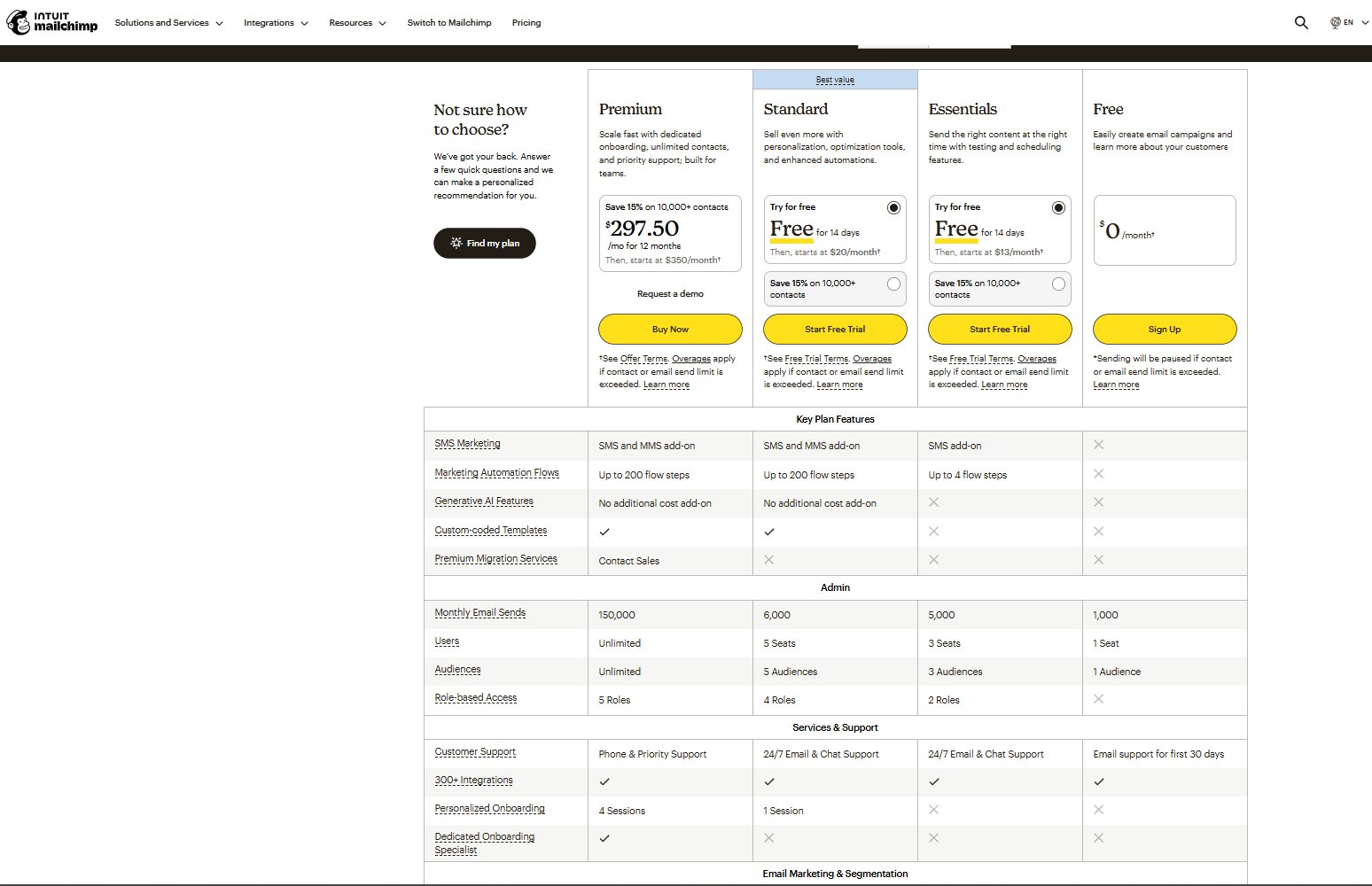
Webinar funnel – Articulate marketing
Articulate Marketing promotes webinars where prospects have to register to watch and exchange their details for access. The promise of high-value insights positions the brand as an authority, and the gated access ensures every sign-up becomes a qualified lead.

Free trial/Freemium funnel – VWO
VWO’s free trial funnel introduces prospects to its A/B testing and experimentation platform. By letting users test the product for themselves, they quickly see results, which lowers hesitation and shortens the sales cycle. Automated reminders and case studies during the trial keep prospects engaged.

Tripwire funnel – Growbo
Growbo tested a $7 swipe file as a tripwire directly after a free resource opt-in. According to their case study, the offer drove over $12,000 in sales while filtering for high-intent buyers who later converted to premium products.

Quiz funnel – Tails.com
Tails.com uses a pet nutrition quiz to personalize meal plans for dogs. Owners answer questions about age, size, and dietary needs, and the funnel recommends a custom plan tailored to their pet. This approach captures data, builds trust through personalization, and leads seamlessly into subscription sign-ups.
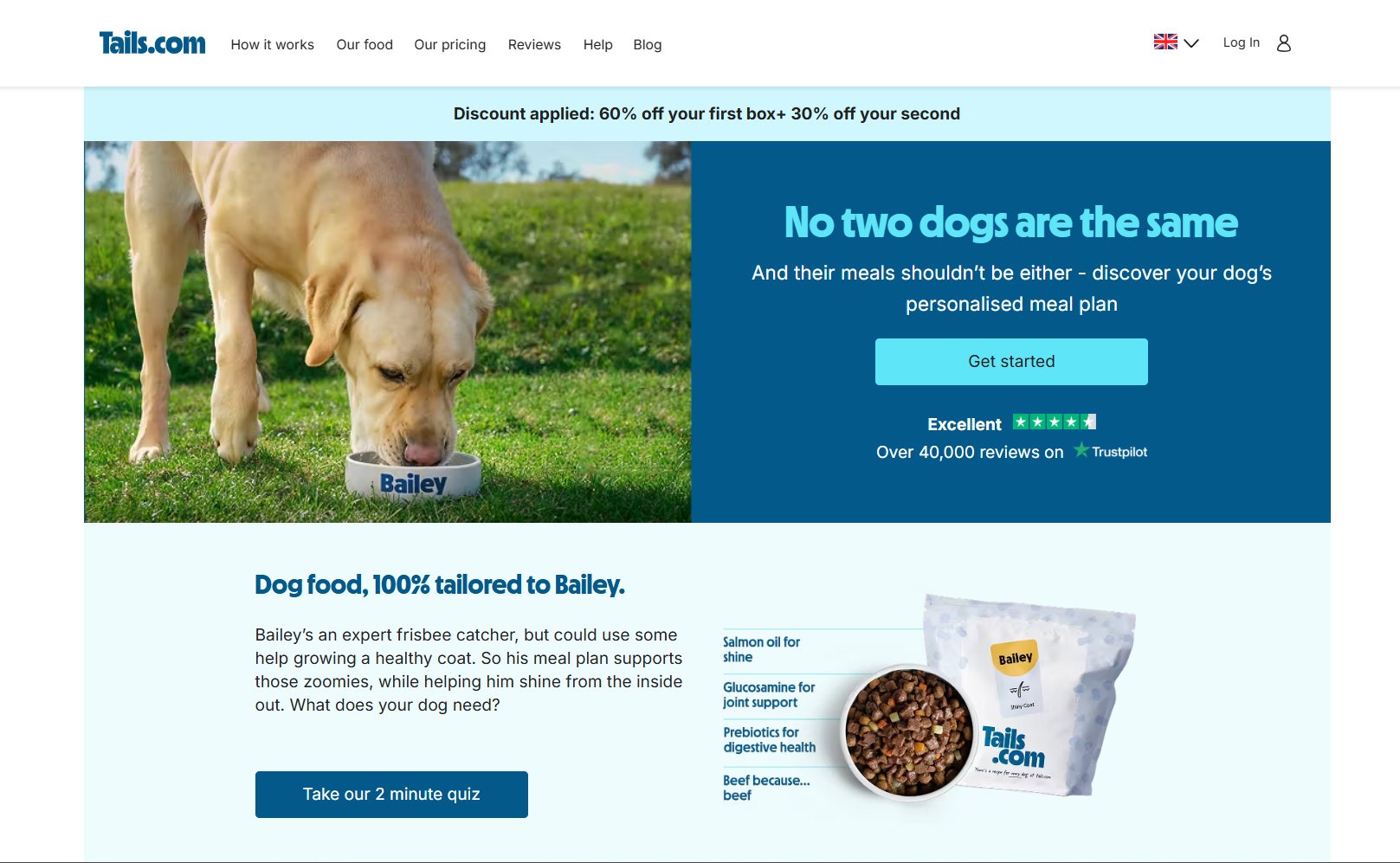
eCommerce funnel – Amazon
Amazon is the benchmark for e-commerce funnels. From personalized product suggestions to one-click checkout, cross-sells (“Frequently Bought Together”), and abandoned cart emails, every touchpoint is optimized to increase order value and reduce drop-offs.

Product launch funnel – Apple (iPhone Launches)
Apple continues to perfect the product launch funnel with each iPhone release. Teasers and keynote events build anticipation, and the iPhone 17 launch page converts that buzz into action with clear pricing, trade-in offers, and a smooth buying flow. The blend of hype before launch and frictionless checkout after ensures record-breaking sales.
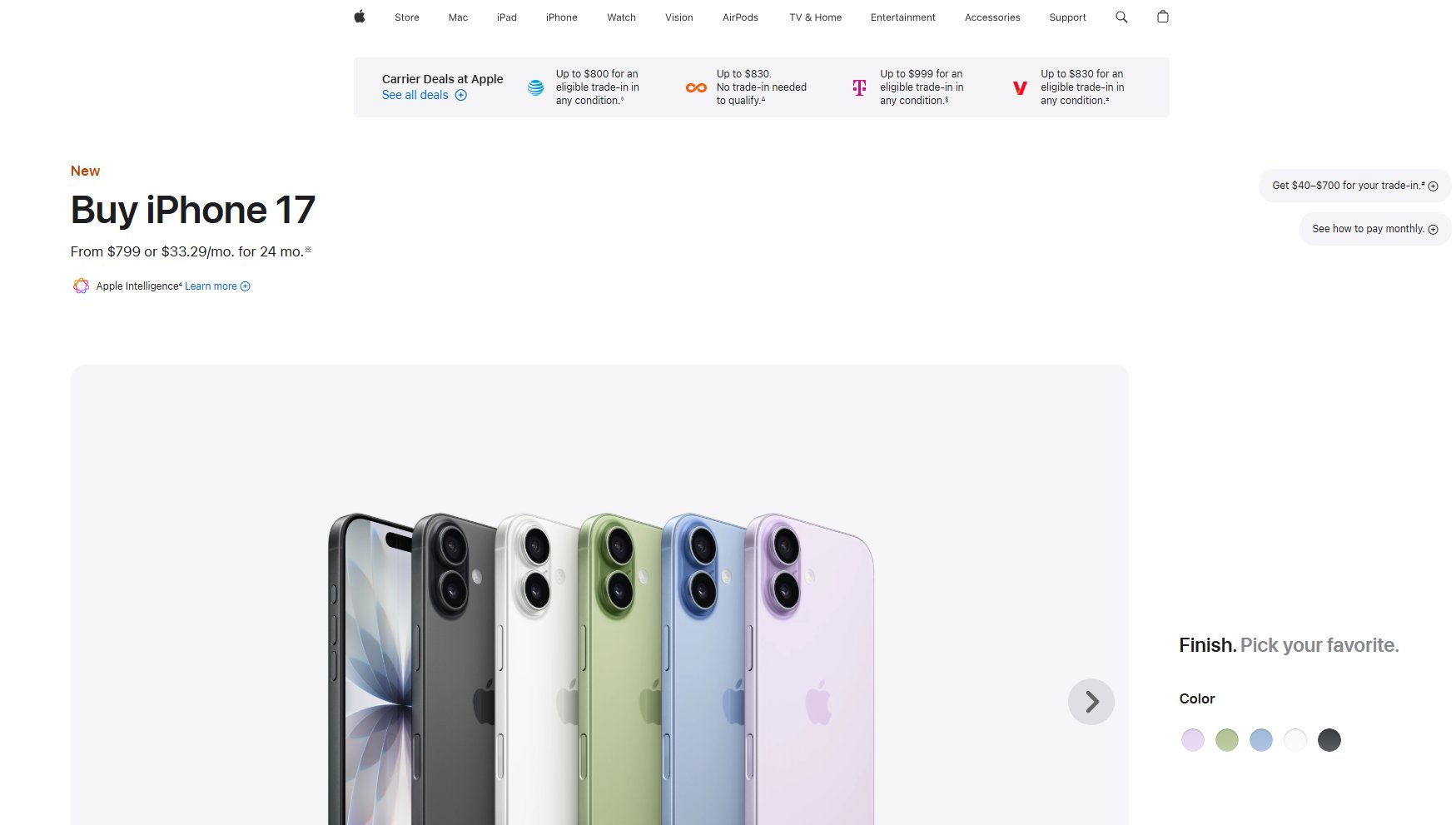
Sales funnel best practices and strategies for high conversions
To wrap up, here are the key strategies and takeaways that can turn a good funnel into a high-converting one and keep it driving results consistently.
- Know your customer: Define their needs, pain points, and behaviours before building the funnel.
- Match content to funnel stage: Awareness = blogs/social, Consideration = webinars/case studies, Decision = CTAs/FAQs/testimonials.
- Keep landing pages focused: One goal, one CTA, benefit-driven copy, and fast load speed.
- Use urgency and low-risk offers: Free trials, limited-time discounts, or tripwires to trigger quick action.
- Track and optimize: Watch drop-off points, A/B test headlines and CTAs, and refine your email marketing sequences based on engagement data.
- Personalize the journey: Segment emails, recommend products, or show dynamic content.
- Reduce friction: Fewer form fields, faster pages, simplified checkout.
- Build trust: Testimonials, reviews, guarantees, and credibility signals.
- Retain and upsell: Post-purchase follow-ups, loyalty rewards, and complementary offers.
- Search engine optimization: Ensure funnel pages are discoverable and attract the right audience before conversion even begins.
How VWO supports high-converting funnels
The strategies you use to create and refine a funnel become even more powerful when backed by the right sales funnel tools. VWO connects directly to the key steps we’ve already covered, turning strategy into measurable results:
Understand your audience: VWO Insights
Go beyond assumptions by seeing how visitors really behave.
- Session recordings let you watch where people hesitate, like trial users dropping off during onboarding or shoppers abandoning pricing pages.
- Heatmaps reveal which areas of a page capture attention and which sections are overlooked.
- Funnel analysis tracks sign-ups, trials, onboarding, and checkout journeys to pinpoint exactly where prospects lose interest.
Case in point: Bunzl used VWO Insights to analyze its conversion funnel and pinpoint where users were dropping off. By combining session recordings, heatmaps, and funnel analysis, they uncovered friction points that top-level metrics had missed. Acting on these insights, Bunzl refined its funnel journey and achieved a 9% lift in sales.
Test, measure, and optimize: VWO Testing
Every funnel change, whether it’s a headline, pricing layout, or demo flow, should be validated with data. VWO Testing lets you run:
- A/B tests to help you compare versions of headlines, buttons, or images to see which pushes more people forward.
- Multivariate tests to test multiple elements at once, such as CTAs, forms, and offers, to find the winning mix.
- Server-side tests to experiment with deeper funnel elements that live behind the interface, like form logic, checkout flows, or feature bundling. Perfect for complex scenarios where backend rules, such as validation, routing, or sequencing, directly impact whether prospects complete the journey.
Case in point: PowToon used VWO to optimize its pricing funnel, the most delicate stage where purchase decisions are made. By testing how storage options were presented, they clarified value for users at this critical step and achieved a 27.9% increase in revenue. It shows how even small adjustments at the bottom of the funnel can make or break conversions, and why validating them through testing is essential.
Build optimized pages & reduce friction: VWO Personalize
Visitors at different stages need different nudges. VWO Personalize makes it possible to adapt pages in real time, whether that means showing ROI calculators to evaluators, simplifying forms for first-time sign-ups, or adding testimonials where trust is critical.
Using its Visual Editor, you can adjust layouts, headlines, or modules without waiting for developers. The result: landing pages and offers that feel instantly relevant to each visitor, reducing friction and building confidence to move forward.
With these capabilities, VWO doesn’t just support your sales funnels; it continuously improves them, ensuring more visitors move through smoothly and convert into long-term paying customers.
Case in point: Orascom Hotels Management turned to VWO Personalize to address a key funnel challenge: returning visitors who weren’t progressing toward booking. By tailoring experiences for these visitors, such as personalized offers and more relevant content, Orascom reduced friction in the booking funnel and boosted booking conversion rates by 25%.
Book a demo and see how VWO can power your journey to building high-converting sales funnels.
Want to see full-funnel theory put into practice? Watch the VWO webinar for concrete tips and tactics.
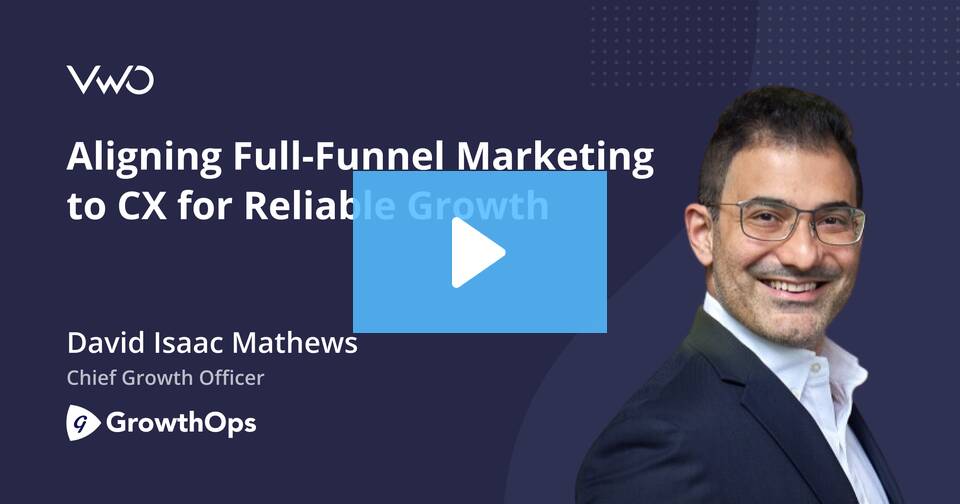
Frequently asked questions (FAQs)
For Shopify, start with a clean, fast product page and a clear CTA. Use upsells and cross-sells (“Frequently Bought Together”), abandoned cart emails, and personalized product recommendations. Layer in retargeting ads and loyalty offers to turn one-time shoppers into repeat buyers.
The sales funnel conversion rate depends on the industry and funnel type, but generally, 2–5% is average, while high-performing funnels often see 10% or more. What matters most is improving your current rate by finding and fixing drop-off points.
A successful funnel delivers the right message at the right time: educating at the top, proving value in the middle, and removing doubts at the bottom. It feels seamless to the customer, builds trust at every stage, and consistently turns attention into action.
The most effective strategies include keeping each step focused on a single goal, offering value upfront (like free trials or lead magnets), personalizing the journey, reducing friction in forms and checkout, building trust with social proof, and continuously testing and optimizing based on data.

